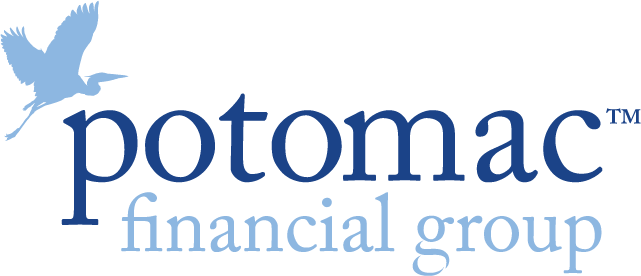Washington Policy Analyst Ed Mills outlines key components of the new legislation.
The year-end fiscal 2023 government funding bill contained legislation that makes the most significant changes to the U.S. retirement savings system in decades. The SECURE Act 2.0 legislation builds on retirement savings changes passed in 2019 and contains new provisions that further raise the required minimum distribution (RMD) age, shift to automatic plan enrollment and provide for new matching/emergency withdrawal opportunities. Most of the key provisions are effective in the 2024-2025 timeframe, but smaller adjustments (such as an increase in the RMD age to 73) will be effective in 2023. See below for a detailed overview of the key provisions in the legislation and the effective timelines.
SECURE Act 2.0 is the second bipartisan bill designed to boost access to retirement savings
The SECURE Act 2.0 is a follow-up bill to the original SECURE Act passed in 2019, which began the process of increasing the RMD age from 70 1/2 and increasing participation in retirement savings plans through various tax incentives and eased administrative rules for employer-sponsored retirement plans.
The new legislation goes well beyond the original iteration and seeks to expand participation in retirement savings plans through mandatory enrollments as well as increased flexibility in the individual use of advantaged savings accounts. The new legislation will also extend the savings timeframe before RMDs are required to 75 by 2033 – an almost five-year increase from the original RMD distribution age. Overall, the changes enacted by the legislation (to be phased in over a multi-year period) are likely to boost the asset base for asset managers through increased participation and interest in retirement savings plans.
Key changes will be phased in over a multi-year period
The most significant changes to the U.S. retirement savings system enacted as part of the recent legislation include a higher RMD age (rising to 75 by 2033), a shift to automatic enrollment for new retirement plans, an allowance for matching contributions to be made for student loan payments (expanding the retirement savings of younger adults), higher catch-up limits for those ages 60-63, and additional opportunities for penalty-free withdrawals/lower penalties for missed RMDs that are corrected.
Starting in 2025, eligible employees will be automatically enrolled into new employer-sponsored retirement plans. Contributions will be set with enrollment between 3-10%, rising by 1% each year unless employees elect to opt out. Under-the-radar provisions include an expansion of multiple employer plans (MEPs) and pooled employer plans (PEPs) to include 403(b)s, 529 to Roth IRA rollovers (max $35,000), and employer-offered de minimis financial incentives (such as gift cards or other financial awards) to increase employee participation in retirement plans.
Detailed descriptions of the key provisions as follows:
- Automatic enrollment: Eligible employees are required to be automatically enrolled in new 401(k) and 403(b) retirement savings plans with a contribution between 3-10%, rising by 1% annually (up to 15%) unless employees opt out. Automatic enrollment is effective starting 2025.
- Higher RMD age: The RMD age is raised to 73 in 2023 and 75 starting 2033.
- MEP and PEP access for 403(b) plans: Access to multiple employer plans (MEPs) and pooled employer plans (PEPs) is expanded to include 403(b) plans.
- Matching contributions for employee student loan payments: Plan sponsors may make matching contributions to 401(k), 403(b), and simple IRA plans for qualified student loan payments made by employees effective 2024.
- Expanded emergency expense distribution allowances: Emergency distributions of up to $1,000 are permitted for unforeseeable or immediate financial needs relating to personal or family emergency expenses once per year, to be paid back within three years (effective 2024).
- Tax and penalty free rollover from 529 to Roth IRA: Beneficiaries of 529 college savings accounts are permitted to rollover up to $35,000 from a 529 account in their name to a Roth IRA account. Rollovers are subject to IRA annual contribution limits and are available for 529 accounts which have been open for more than 15 years. Rollovers are permitted starting 2024.
- Reduced penalty for failure to take RMDs: A tax penalty of 50% for failure to take RMDs is reduced to 25%. For IRAs, the tax is further reduced to 10% if corrected. Reduction is effective as of the bill’s signing.
- Higher catch-up contribution allowances: For those ages 60-63, the catch-up contribution limit is raised to the greater of $10,000 or 50% higher than the regular catch-up amount. The higher allowance is effective starting 2025.
- Emergency withdrawals for domestic abuse survivors: Emergency withdrawals for the expenses of individuals escaping domestic abuse situations are provided at the lesser of $10,000 or 50% of the value of the account, to be repaid over three years with a refund of income taxes paid on the repaid amount. Withdrawals permitted starting 2024.
- Emergency withdrawals for disaster relief: Withdrawals of up to $22,000 from employer retirement accounts or IRAs are permitted for individuals affected by a federally declared disaster. These emergency-related withdrawals are permitted for disasters occurring on or after January 26, 2021.
- Expanded administrative cost tax credit for new businesses: A 50% tax credit for administrative costs incurred by new businesses is raised to 100% for companies with 50 or less employees effective 2023.
- Employer-offered incentives: De minimis financial incentives (such as gift cards or other financial awards) are permitted for sponsor efforts to boost employee participation in retirement savings plans, effective as of the signing of the bill into law.

